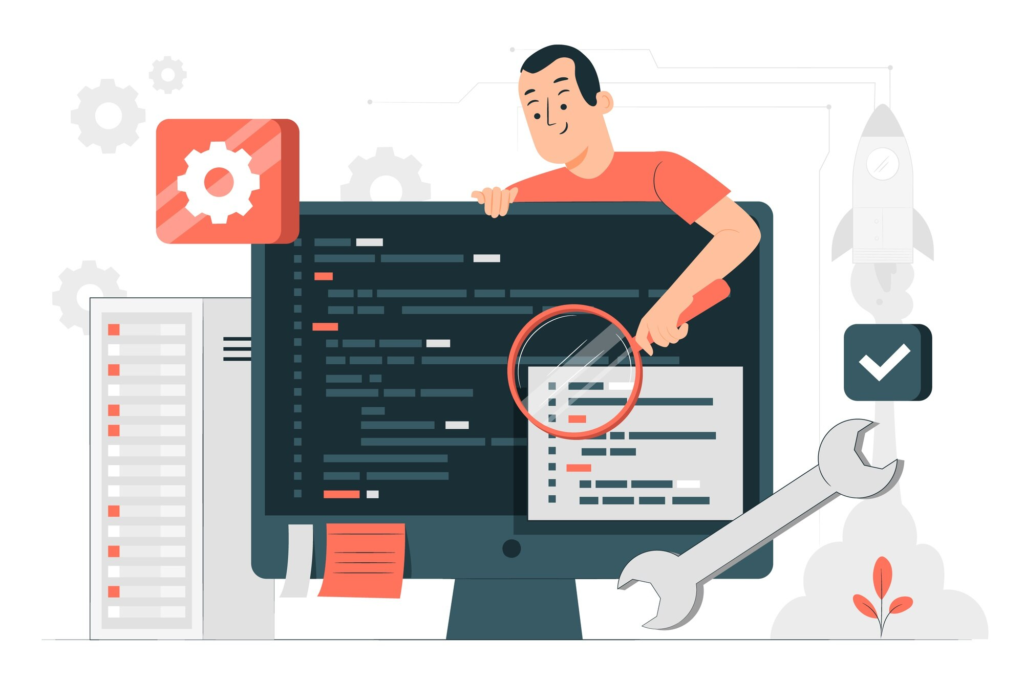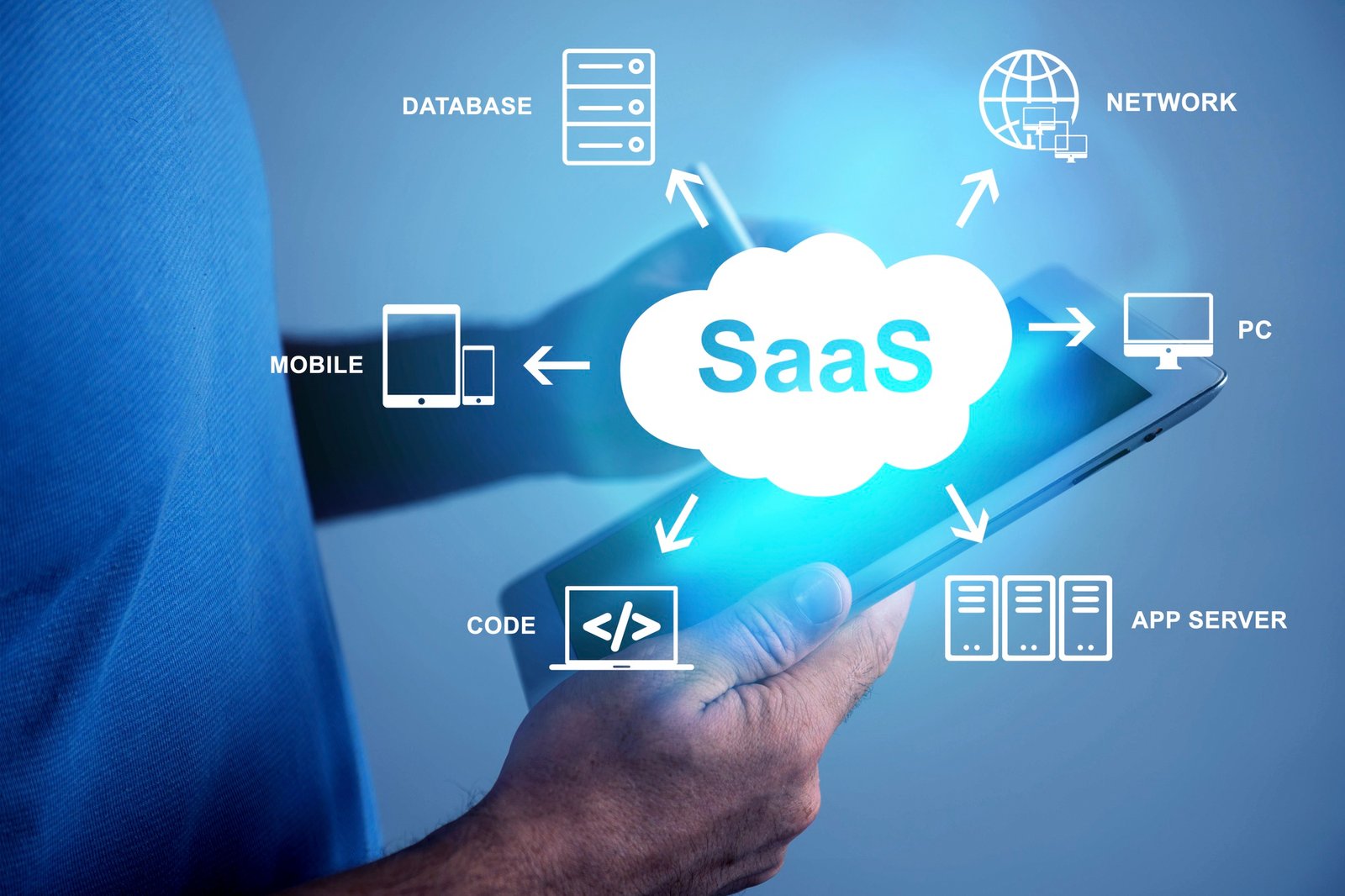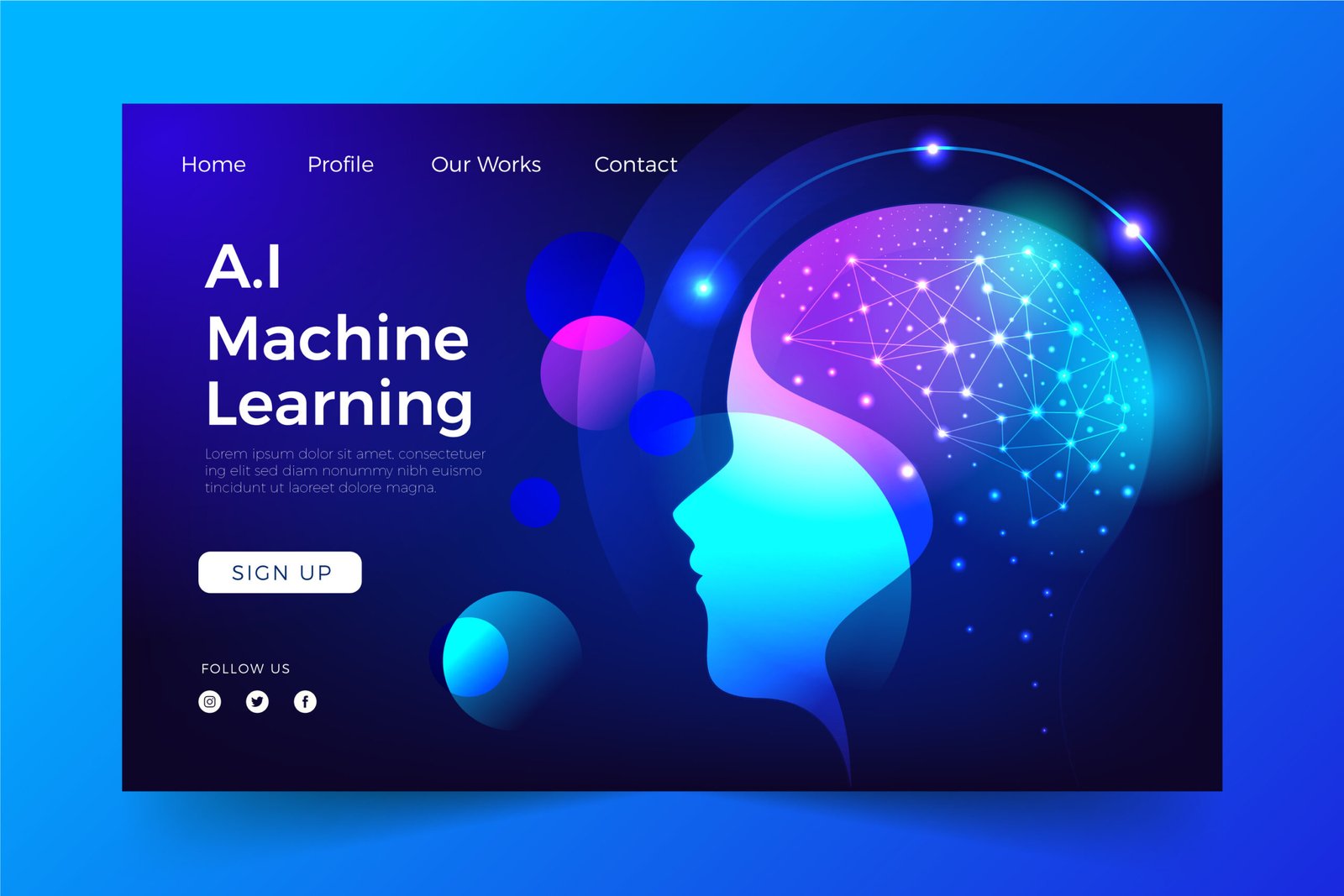Introduction to SaaS for B2B Growth
Software as a Service (SaaS) has emerged as a pivotal component in driving growth within the business-to-business (B2B) sector. Unlike traditional software solutions that require installation and regular updates, SaaS offers a cloud-based model that enables businesses to access their applications via the internet. This paradigm shift not only lowers the barriers to entry for enterprises but also facilitates scalable and flexible usage, making it particularly attractive in a competitive B2B landscape.
The significance of SaaS in B2B growth cannot be overstated. SaaS solutions streamline various operational processes, allowing companies to automate routine tasks, manage resources efficiently, and reduce overall costs. By leveraging cloud technologies, businesses can improve their productivity and focus on their core competencies, thereby enhancing their competitive edge. Furthermore, SaaS platforms often incorporate advanced analytics and real-time data capabilities, enabling organizations to make informed decisions and respond swiftly to market changes.
Additionally, customer engagement experiences are transformed through the implementation of SaaS applications. Tools designed for customer relationship management (CRM), marketing automation, and support services facilitate seamless communication between businesses and their clients. This integration cultivates strong relationships and fosters customer loyalty, which is essential for sustainable growth in the B2B sector.
As businesses look to capitalize on the advantages of SaaS, the selection of the right tools becomes critical in achieving their objectives. The appropriate SaaS solutions must align with an organization’s unique needs and goals, ensuring that they not only support current operations but also contribute to long-term growth strategies. As such, understanding the landscape of SaaS offerings is indispensable for B2B companies striving to unlock their full growth potential.
Understanding Your Business Needs
Before embarking on the journey to select the right Software as a Service (SaaS) solution for your B2B operations, it is essential to conduct a thorough assessment of your business needs. This evaluation is vital not only for ensuring that the chosen software aligns with current objectives but also for addressing any underlying challenges that may impede growth.
Start by taking stock of your existing processes. Identify the tasks that are currently performed, the technologies in use, and the pain points experienced by your team. By understanding these elements, you can draw a clearer picture of what works well and what requires improvement. Engaging your team members during this assessment is crucial, as they can provide valuable insights into inefficiencies and specific areas within the workflow that may need enhancement.
Next, outline the challenges that your business is facing. Whether it’s managing customer relationships, tracking sales performance, or streamlining communication, pinpointing these difficulties will guide you toward a SaaS solution equipped with the necessary tools for resolution. This step can often surface needs that may not be evident at first glance, empowering your organization to tackle issues proactively rather than reactively.
Moreover, establishing clear business goals is essential. Define what success looks like for your organization in the short and long term. Are you aiming to improve customer satisfaction, increase sales, or enhance operational efficiency? With these objectives in mind, it becomes easier to articulate what functionalities and features the SaaS solution must include to facilitate reaching them.
Incorporating feedback and gathering requirements collectively will ensure that the selected SaaS solution is customized to your unique business context. By placing emphasis on understanding your specific needs, you will pave the way for a more effective decision-making process in your SaaS selection, ultimately driving your B2B growth potential.
Evaluating SaaS Features and Capabilities
When selecting a Software as a Service (SaaS) solution for a B2B environment, it is imperative to consider various features and functionalities that align with the distinct needs of the business. One of the primary features to evaluate is scalability. As businesses evolve, their operational requirements may change, making it essential to choose a SaaS product that can adjust accordingly. A scalable solution empowers organizations to expand their use of the software without facing significant hurdles, especially regarding user load and data processing.
Equally important is integration capability. A robust SaaS platform should seamlessly integrate with existing tools and systems that the company is currently using. This integration facilitates a smooth workflow and improves data consistency across departments, allowing for better decision-making and operational coherence. Therefore, before committing to a SaaS provider, businesses should review the compatibility of the solution with their established infrastructure.

The user experience of the SaaS solution is another critical factor. A user-friendly interface can significantly enhance productivity, as it reduces the learning curve for employees. When evaluating options, B2B companies should prioritize software that offers intuitive navigation and comprehensive support resources. Furthermore, security features cannot be overlooked, especially given the increasing prevalence of cyber threats. A SaaS product must provide measures such as data encryption, user access controls, and compliance with regulatory standards to safeguard sensitive business information.
Lastly, customization capabilities are crucial for tailoring the software to meet specific business functions. A flexible solution allows organizations to adjust settings and workflows according to unique processes, ensuring that the tool effectively supports various aspects of the business. In conclusion, by thoroughly evaluating these key features—scalability, integration, user experience, security, and customization—B2B companies can select the most suitable SaaS product to facilitate their growth and operational efficiency.
Researching and Comparing SaaS Providers
In an increasingly digital landscape, selecting the appropriate Software as a Service (SaaS) provider for B2B operations is critical for long-term success. A comprehensive approach to research is essential when assessing different SaaS solutions. This begins with gathering information from various sources, including online reviews and testimonials. Websites such as G2, Capterra, and Trustpilot offer user-generated content that highlights real experiences, enabling potential customers to gauge the strengths and weaknesses of each provider.
Additionally, examining detailed case studies can provide profound insights into how a SaaS product has performed across different industries. Many providers showcase success stories that underline their service’s capabilities, providing prospective users a clearer picture of how the software can address specific business needs. When evaluating these case studies, focus on metrics that reflect tangible results, such as return on investment, efficiency improvements, and user satisfaction levels.
Exploring the provider’s documentation is another aspect critical to the comparison process. Detailed user guides, FAQs, and training resources reflect a company’s commitment to transparency and customer support. Quality documentation can be an indicator of a provider’s reliability and ongoing support capabilities. When a situation arises that necessitates assistance, having comprehensive documentation available is invaluable for minimizing downtime and ensuring that your team can leverage the full functionality of the software.
In addition to researching product performance and documentation, the reputation of the provider cannot be overlooked. A solid track record of customer service, particularly in addressing issues and making continuous improvements, is vital. By evaluating these factors diligently, businesses can make an informed decision, leading to enhanced productivity and overall satisfaction with their chosen SaaS solution.
Assessing Cost vs. Value
When selecting a Software as a Service (SaaS) solution for your B2B operations, it is crucial to evaluate the cost structure meticulously in conjunction with the value it promises to deliver. Understanding this balance will not only assist in budgeting but also in maximizing your return on investment (ROI).
Initially, it is important to assess the upfront costs associated with implementing a SaaS solution. This may include one-time fees for setup, customization, and initial training. Many businesses overlook these initial expenses, which can significantly impact the overall budget if not accounted for properly. Therefore, it is advisable to obtain a comprehensive breakdown of all costs from potential SaaS vendors, including any associated setup costs.
Subscription fees are another critical component. SaaS providers typically offer various pricing models, such as monthly or annual subscriptions. Evaluating the rationale behind different tiers of pricing is essential; higher tiers may offer additional features or enhanced support that could justify the increased costs. Always consider how these subscription fees align with the specific features your business needs.
Moreover, potential hidden costs can surprise organizations if not thoroughly investigated. These may include fees for exceeding usage limits, costs associated with integrations, or charges for additional user licenses. A transparent pricing structure from the SaaS provider can help avoid unexpected expenses and ensure a clear assessment of the financial commitment.
Ultimately, evaluating the ROI should drive the decision-making process. This involves measuring the expected benefits against the total costs associated with the SaaS solution. By calculating how the SaaS application could enhance productivity, streamline operations, or improve customer satisfaction, businesses can make informed choices that align with their strategic objectives.

Trial and Feedback: The Importance of Testing SaaS Solutions
As businesses navigate the landscape of software as a service (SaaS), leveraging trial periods offered by providers becomes an essential step in the selection process. These trial periods allow organizations to explore various functionalities and features before making a long-term commitment, thereby minimizing financial risk and ensuring alignment with business objectives. During the trial phase, it is critical for companies to engage multiple stakeholders and end-users to gather diverse feedback on the usability and effectiveness of the solution.
By involving different departments in the testing process, organizations can thoroughly evaluate whether the SaaS solution meets their operational needs. Feedback can be gathered through surveys, workshops, or focus groups, enabling the identification of any potential gaps or mismatches between the users’ expectations and the actual capabilities of the software. This collaborative approach not only enhances the selection process but also fosters a sense of ownership among employees, as they contribute to the decision-making process.
Moreover, during the trial period, businesses should meticulously assess the performance of the SaaS solution in real-world scenarios. This includes monitoring key performance indicators (KPIs) that align with specific business goals, which may involve examining efficiency, integration capabilities, and ease of use. By using data-driven insights from the trial, organizations can make informed decisions about whether to proceed with the provider, negotiate terms, or seek alternative solutions that may better serve their needs.
Ultimately, taking advantage of trial periods offered by SaaS providers offers an invaluable opportunity for companies to ensure that the chosen solution is a good fit. The feedback gathered from stakeholders and end-users during this phase plays a crucial role in validating the decision and positioning the organization for successful implementation in the long run. Investing time in this testing phase can lead to better utilization of resources and a greater likelihood of achieving desired business outcomes.
Implementation and Integration Strategies
When selecting a Software as a Service (SaaS) solution for B2B operations, the implementation and integration phase is crucial to maximizing its potential benefits. An effective plan will significantly enhance the transition process, ensuring minimal disruption to ongoing operations. First, it is important to assess the current infrastructure and identify legacy systems that the SaaS will interface with. This analysis not only helps in understanding compatibility challenges but also in determining necessary adjustments for a seamless integration.
Next, engaging key stakeholders from different departments early in the implementation process can be beneficial. Their input will provide insights into specific functional needs and preferences, allowing for a smoother alignment of workflows with the new SaaS platform. It is also advisable to establish clear objectives and milestones that outline what success looks like across the integration period. This focused approach helps in tracking progress and making necessary adjustments in real-time.
Training staff is another vital aspect of the implementation process. Utilizing a combination of online tutorials, in-person workshops, and hands-on practice sessions can foster a more comprehensive understanding of the new system. This will not only enhance user competence but also encourage buy-in from employees, who are often resistant to change. As users become more adept with the software, they can optimize workflows that may have been disrupted during the transition. Providing ongoing support and resources can further instill confidence in the team and enhance collaboration.
Finally, regularly evaluating the integration of the SaaS with existing operations ensures that any issues are addressed promptly. Continuous feedback from users can reveal potential areas for improvement and can facilitate adjustments that enhance functionality. By adopting these best practices in implementation and integration, businesses can effectively harness the power of SaaS solutions, paving the way for optimized growth and efficiency.
Monitoring and Optimization After Implementation
Once a SaaS solution is implemented within a B2B environment, the process does not end there; ongoing monitoring and optimization are crucial for sustained success. The primary aim is to ensure that the chosen software continues to align with the evolving business objectives. An effective strategy for this begins with establishing key performance indicators (KPIs) that are directly related to the goals set during the selection phase. These KPIs serve as measurable benchmarks that can help assess the tool’s effectiveness and identify areas for improvement.
Tracking these metrics regularly allows businesses to evaluate the performance of the SaaS solution objectively. For instance, metrics such as user adoption rates, task completion time, and customer satisfaction scores can provide essential insights into how well the software serves its intended purpose. Keeping a dashboard that visualizes these KPIs can facilitate easier analysis and quicker decision-making.
In addition to quantitative measures, gathering user feedback is equally important. Engaging with employees who utilize the software can reveal nuanced insights that data alone might overlook. Surveys, interviews, and informal discussions can be valuable tools for understanding user experience and identifying any functional gaps within the software. It is imperative to create an open environment for feedback, allowing users to express their opinions on both strengths and weaknesses of the tool.
Lastly, based on the performance analytics and feedback gathered, businesses should remain agile and be prepared to make necessary adjustments. This could involve tweaking features, enhancing user training, or even considering further integrations with other tools in use. By regularly revisiting the efficacy of the SaaS solution and making data-driven adjustments, organizations can ensure that they maximize their investment and continue meeting their business needs over time.
Conclusion and Future Considerations
Choosing the right Software as a Service (SaaS) solution is pivotal for B2B companies seeking to drive growth and streamline their operations. Throughout this blog, we have delved into several critical factors that should inform your SaaS selection process. These include understanding your business requirements, evaluating vendor reputation, assessing scalability, and considering integration capabilities with existing systems. Each of these elements plays a vital role in ensuring that the chosen SaaS platform aligns with your broader business strategy and operational needs.
As you reflect on your SaaS choices, it is essential to adopt a long-term perspective. The technological landscape is ever-evolving, and new trends such as artificial intelligence, machine learning, and enhanced cybersecurity measures will continue to shape the future of SaaS offerings. By remaining informed about these developments, businesses can make more strategic decisions that not only meet their current needs but also position them for future challenges and opportunities.
Moreover, adaptability is key. As your business grows or pivots in response to market demands, the SaaS solutions you choose must also be flexible enough to accommodate such changes. Continuous engagement with your software providers is advisable to ensure that you are leveraging the full capabilities of the platform and staying updated on new features that can enhance your operational efficiency.
In conclusion, selecting the right SaaS solution is not merely a decision restricted to immediate benefits; it should be viewed as a strategic investment for long-term success. As you navigate the complexities of SaaS selection, prioritize a thorough evaluation process, stay informed about technological advancements, and maintain flexibility to adapt to an ever-changing business environment. This proactive approach will ultimately enhance your company’s resilience and drive sustained growth.





